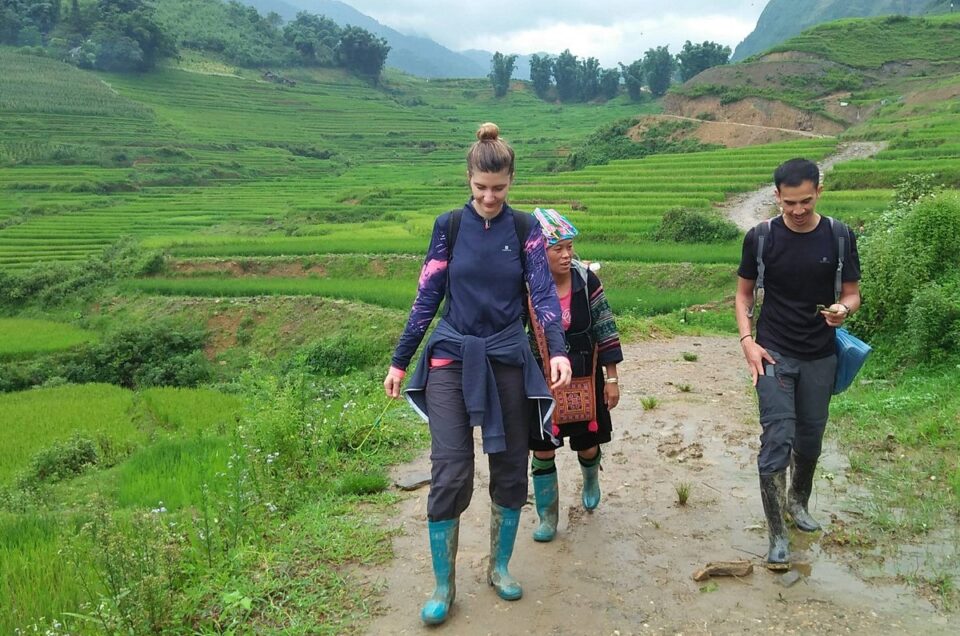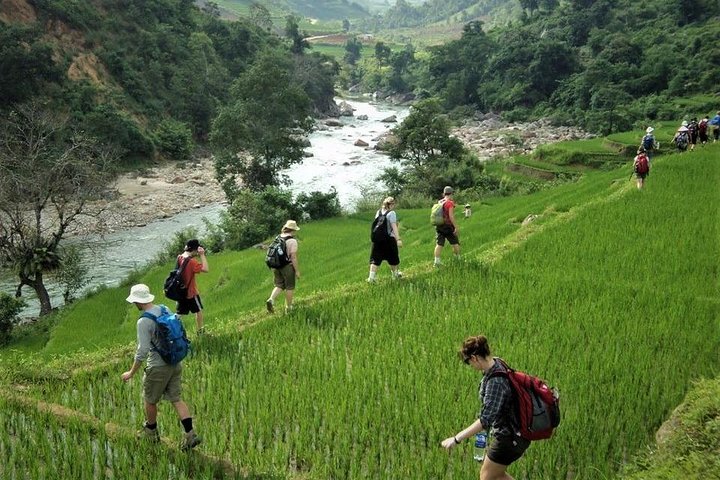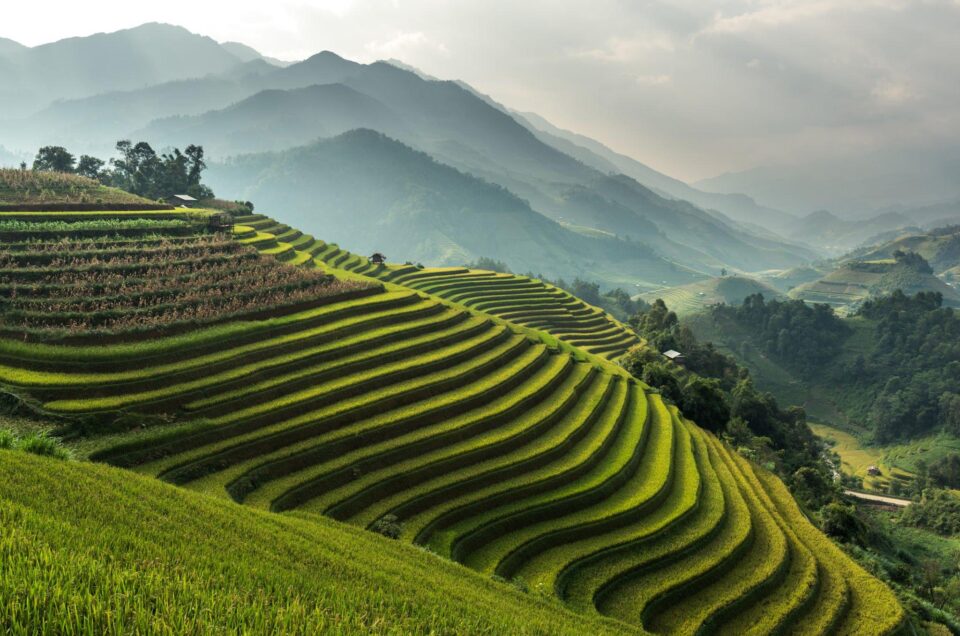Welcome to our Vietnam Experience landing page! If you’ve been dreaming of an adventure filled with vibrant culture, breathtaking landscapes, and unforgettable experiences, then Vietnam is the perfect destination for you.
Table of Contents
Vietnam, located in Southeast Asia, is a country known for its fascinating history, diverse landscapes, and warm hospitality. From the bustling cities of Hanoi and Ho Chi Minh City, to the stunning natural wonders of Ha Long Bay and the Mekong Delta, Vietnam travel offers a rich tapestry of experiences that will captivate your senses.

The motivation behind this point of arrival is to give you all the news you really want to do your definitive Vietnam travel insight. Whether you’re a first-time guest or a well prepared tourist, we take care of you.
We want to provide you with an outline of the top urban areas and attractions, give bits of knowledge on the best opportunity to visit, share tips on getting around, submerge you in the energetic food culture, and assist you with tracking down the ideal convenience for your visit.
The top cities and attractions to visit in Vietnam, including their cultural and historical significance.
The best time to visit Vietnam based on weather patterns and popular festivals.
Different transportation options available for getting around Vietnam, along with their pros and cons.
The diverse and delicious cuisine of Vietnam, from iconic dishes to street food recommendations.
Tips on finding accommodation in Vietnam travel, including insights on different regions and neighborhoods.
We hope that this landing page will inspire you to start planning your Vietnam journey and provide you with the necessary information to make your trip unforgettable. Let us be your trusted guide as you embark on this incredible adventure. Start exploring Vietnam travel with us today!
What to See and Do in Vietnam
Vietnam is a nation brimming with rich history, lively culture, and stunning scenes. From busy city to stunning landscape, there’s something for everybody in Vietnam. Here are a portion of the top urban communities and attractions to visit:
Vietnam’s Destination
Hanoi
Hanoi, the capital of Vietnam, is known for its wonderful city, rich social legacy, and clamoring roads. A portion of the high priority attractions include:
-Hoan Kiem Lake: This lake located in the core of the city is a famous spot for local people and sightseers the same to unwind and take in the environmental factors.

-Temple of Literature: in 1070, this temple is committed to Confucius and is home to Vietnam’s most memorable college.
–Hanoi Old Quarter: This architecturally significant area is brimming with tight roads and structures tracing all the way back to the fifteenth hundred years.
Ho Chi Minh City
Previously known as Saigon, Ho Chi Minh City is the biggest city in Vietnam and a center of business and diversion. Significant social and verifiable spots to visit include:
-The Independence Palace: Otherwise called the Reunification Castle, it was the home of the South Vietnamese president during the Vietnam War and is presently a historical center.

-War Remnants Museum: This museum presents a sobering look at the Vietnam War through photos and displays.
-Cu Chi Tunnels: A network of tunnels used by the Viet Cong during the Vietnam War, now open for tours.
Hue
Hue is located on the Perfume River and was the capital of Vietnam during the Nguyen Dynasty (1802-1945). Some of the notable attractions include:
-The Citadel: This ancient complex was once home to the Emperor and royal family, and is now a UNESCO World Heritage site.

-Thien Mu Pagoda: This iconic seven-story pagoda is one of the oldest in Vietnam and a symbol of Hue.
-Tombs of the Emperors: These elaborate tombs honor various emperors of the Nguyen Dynasty and showcase unique architecture and design.
Hoi An
Hoi An is a charming coastal town located in central Vietnam and a UNESCO World Heritage site. Some of the must-see attractions include:
-Japanese Covered Bridge: This iconic bridge was built in the 16th century by Japanese merchants and is a symbol of Hoi An.

-Hoi An Ancient Town: This historic district is full of well-preserved buildings and temples that reflect its diverse cultural influences.
-An Bang Beach: A perfect place to relax and soak up the sun, this beach is known for its white sand and clear waters.
Ha Long Bay
Ha Long Bay is a stunning natural wonder of Vietnam and a UNESCO World Heritage site. Some of the popular activities include:
–Halong Bay Cruises tours: Take a tour of the bay by boat and marvel at the limestone cliffs and emerald waters.
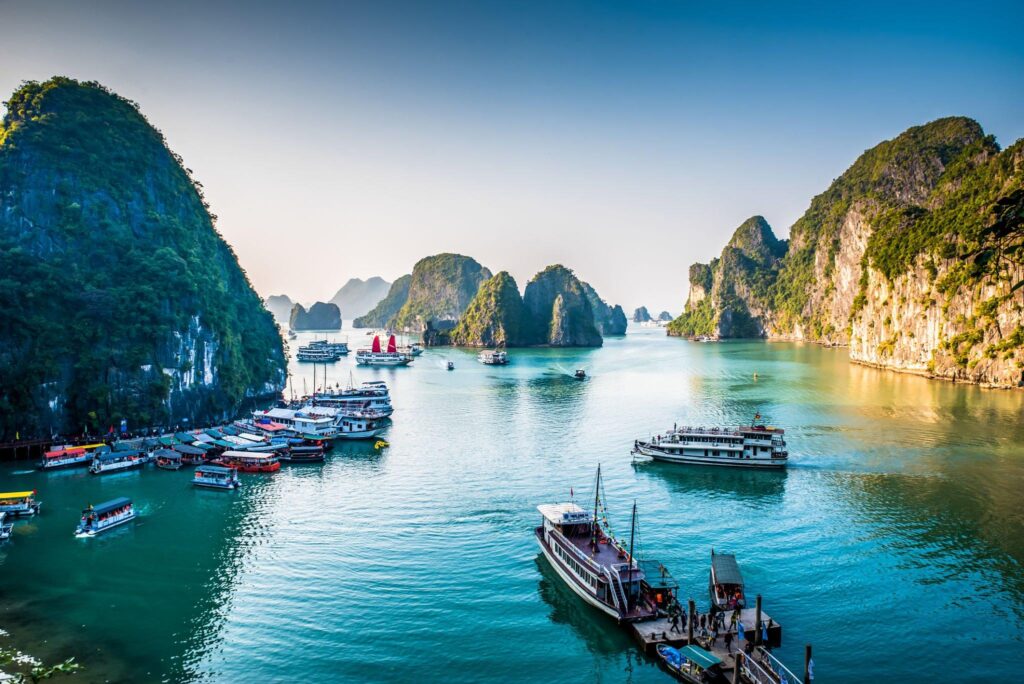
–Cave exploration: Visit some of the many caves in the bay, including the famous Thien Cung Cave.
–Kayaking: Paddle around the bay and explore hidden lagoons and beaches.
These are just some of the top cities and attractions to visit in Vietnam. Whichever destinations you choose, you’ll be sure to experience the rich cultural and historical significance that makes Vietnam such a fascinating country to explore.
Things to know before you go
Vietnam travel itinerary experiences a diverse climate due to its elongated shape and varying geographic features. The country is generally divided into three distinct regions: the North, Central, and South.To show you What is the best month to visit Vietnam?

Best Time to Visit Vietnam
Northern Vietnam
Northern Vietnam, including Hanoi and Ha Long Bay, encounters four seasons: spring (Walk to April), summer (May to August), pre-winter (September to November), and winter (December to February).
Spring (Walk to April): This is viewed as one of the most mind-blowing times to visit Northern Vietnam, as the weather conditions is gentle with wonderful temperatures and sprouting blossoms.
Summer (May to August): The mid year months bring higher temperatures and intermittent downpour showers. While it very well may be hot and moist, this is the best chance to visit Sapa, a famous traveling objective.
Pre-winter (September to November): Harvest time brings cooler temperatures and drier climate, making it an extraordinary chance to investigate Hanoi and witness the energetic fall foliage. It’s also the best time to travel to Vietnam.
Winter (December to February): Winters in Northern Vietnam can be chilly, particularly in hilly regions like Sapa, but on the other hand it’s an extraordinary opportunity to visit to encounter Lunar New Year festivities (Tet).
Central Vietnam
Central Vietnam, including Hue, Hoi An, and Da Nang, experiences a different climate pattern with distinct wet and dry seasons.
Dry Season (February to August): The dry season in Central Vietnam is the most popular time for tourists, as the weather is generally sunny and rain is minimal. This is a great time for beach activities, exploring historical sites, and participating in festivals.
Wet Season (September to January): The wet season in Central Vietnam brings heavy rainfall and occasional typhoons. However, it’s still possible to visit during this time, as the rain usually comes in short bursts and the landscape becomes lush and green.
Southern Vietnam
Southern Vietnam, including Ho Chi Minh City and the Mekong Delta, has a tropical climate with two seasons: dry season (December to April) and rainy season (May to November).
Dry Season (December to April): This is the best time to visit Southern Vietnam, as the weather is dry and sunny, making it perfect for exploring bustling cities and taking boat trips in the Mekong Delta.
Rainy Season (May to November): The rainy season in Southern Vietnam brings frequent showers, but they are usually short-lived and followed by sunshine. This time of the year is less crowded, and prices may be lower.
Celebrations and Occasions
Vietnam is known for lively celebrations and occasions are praised consistently. The following are a couple of travel guide to Vietnam:
Festivals and Events
Tet (Lunar New Year): This is the most significant and broadly celebrated celebration in Vietnam, typically happening in late January or February. It denotes the start of the lunar schedule and is a period for family gatherings, conventional food varieties, and beautiful festivals.

Mid-Fall Celebration: Otherwise called the Lamp Celebration, this occasion happens on the fifteenth day of the eighth lunar month (around September or October). It is a period for youngsters to play with lights and appreciate mooncakes.
Hoi An Lattern Celebration: Occurring on the fourteenth day of each lunar month in Hoi An, this celebration sees the town’s roads enlightened with vivid lights and customary exhibitions.
Da Lat Flower Celebration: Held like clockwork in Da Lat, this celebration grandstands the city’s amazing blossoms and highlights marches, displays, and social exhibitions.
By taking into account the weather conditions and the celebrations/occasions occurring during your favored travel period, you can design your visit to Vietnam at the best opportunity to encounter both great weather patterns and the country’s social features.
Getting Around Vietnam
When it comes to traveling around Vietnam, there are several transportation options available to suit different preferences and budgets. Let’s explore the pros and cons of Vietnam:
Transportations
- Flights
Pros: Fastest way to travel long distances within Vietnam travel. Convenient for covering large distances between different regions. Some airports are located closer to popular tourist destinations.
Cons: Can be more expensive compared to other modes of transportation. Limited flight options for remote or smaller destinations. Subject to potential delays or cancellations.
Estimated Costs and Travel Times: Domestic flights within Vietnam can range from $30 to $150, depending on the distance and airline. Travel times will depend on the distance. For example, a flight from Hanoi to Ho Chi Minh City usually takes around 2 hours.
- Trains
Pros: Scenic way to travel through the countryside and admire the landscapes. Generally more spacious and comfortable compared to buses or minibusses. Overnight sleeper trains are available for longer journeys.
Cons: Limited train routes and schedules, especially for certain destinations. Longer travel times compared to flights. May not be as efficient for covering long distances or remote areas.
Estimated Costs and Travel Times: Train ticket prices vary depending on the class and distance. For example, an overnight sleeper train from Hanoi to Hue can cost around $30 to $60. Travel times will depend on the distance and train route. For example, a train journey from Hanoi to Da Nang takes around 14-16 hours.
- Buses
Pros: Extensive network of bus routes covering various destinations. Affordable option for budget travelers. Flexibility in terms of departure times and frequency of buses.
Cons: Can be crowded and uncomfortable, especially for long journeys. Longer travel times compared to flights or trains. Limited space for luggage.
Estimated Costs and Travel Times: Bus ticket prices can be as low as $5 for short distances, but prices will vary depending on the distance and type of bus. Travel times will depend on the distance and traffic conditions. For example, a bus journey from Ho Chi Minh City to Mui Ne can take around 5-6 hours.
- Motorbikes
Pros: Ultimate freedom and flexibility to explore at your own pace. Access to remote areas and off-the-beaten-path destinations. Immersive experience to soak in the local culture and scenery.
Cons: Requires prior experience and confidence in riding motorbikes. Traffic can be chaotic and challenging, especially in cities. Safety concerns and risks associated with road conditions and other drivers.
Estimated Costs and Travel Times: Motorbike rental prices vary depending on location and duration. On average, daily rental prices range from $5 to $15.. Travel times will depend on the distance and riding speed. For example, a motorbike trip from Hoi An to Hue can take around 2-3 hours.
- Taxis and Transport Services
Pros: Convenient and door-to-door transportation. Ideal for shorter distances within cities or towns. Ride-hailing services provide upfront pricing and additional safety features
Cons: Taxis may be more expensive compared to other modes of transportation. Potential language barrier with drivers. Traffic congestion in cities can lead to longer travel times
Estimated Costs and Travel Times: The cost of taxi rides will depend on the distance and metered rates. For example, a taxi ride within Hanoi may cost around $2 to $10, depending on the distance and traffic.
Travel times will depend on the distance and traffic conditions. It’s important to note that the estimated costs and travel times provided are approximate and can vary based on factors such as distance, demand, and seasonality. It’s recommended to check and compare prices, schedules, and availability before making your travel arrangements.
Cuisine and Food Culture in Vietnam
Vietnamese cuisine is known for its fresh ingredients, vibrant flavors, and diverse regional dishes. From street food stalls to upscale restaurants, Vietnam travel tips offers a wide range of food options to satisfy every palate. Here are some popular dishes and recommendations on the best places to eat:
Vietnamese Cuisine
Popular Dishes
Pho: A famous Vietnamese noodle soup made with beef or chicken broth, rice noodles, and various toppings such as meat, herbs, and bean sprouts. Try it at Pho Gia Truyen in Hanoi or Pho Hoa Pasteur in Ho Chi Minh City.

Banh Mi: A delicious Vietnamese sandwich made with a crusty French baguette, filled with ingredients like pork, pate, pickled vegetables, and fresh herbs. Get one from Banh Mi Phuong in Hoi An or Banh Mi Huynh Hoa in Ho Chi Minh City.

Bun Cha: Grilled pork served with rice noodles, herbs, and a dipping sauce. Sample this dish at Bun Cha Huong Lien in Hanoi, famously known as “Bun Cha Obama” after it was visited by former President Barack Obama.
Cao Lau: A specialty of Hoi An, this dish features thick rice noodles topped with pork, herbs, crispy croutons, and a savory sauce. Visit Hao Noodle in Hoi An for an authentic taste.
Goi Cuon: Fresh spring rolls made with rice paper wrappers filled with shrimp, pork, vegetables, and herbs. Enjoy them at Nha Hang Ngon in Ho Chi Minh City or Quan An Ngon in Hanoi.

Best Places to Eat
Hanoi: Explore the bustling street food scene in the Old Quarter with local vendors serving up iconic dishes like pho, bun cha, banh mi, and Vietnamese coffee. Don’t miss the seafood stalls at Quan An Ngon or the family-run restaurant Cha Ca La Vong, famous for its grilled fish dish.

Hoi An: Wander through the lantern-lit streets and sample local delicacies at the Central Market or night markets. Be sure to try the local specialties at Banh Mi Phuong, Cao Lau Thanh, and Madame Khanh – The Banh Mi Queen.
Ho Chi Minh City: Discover the vibrant food scene in this bustling city, from high-end restaurants to street food markets. Check out the local favorites such as Banh Xeo 46A for crispy pancakes, Quan Ut Ut for delicious BBQ, and Ben Thanh Street Food Market for a variety of Vietnamese street food and Vietnam Travel.
Dietary Limitations and Facilities
Vietnamese food offers choices for different dietary inclinations and limitations. Here are a few contemplations:
Veggie lover/Vegetarian: While Vietnamese cooking is for the most part meat-weighty, there are veggie lover and veggie lover choices accessible. Search for vegan cafés or slows down that deal dishes like veggie lover pho and veggie-filled spring rolls.
Well known veggie lover diners incorporate Murmur Vegan (Hanoi and Ho Chi Minh City) and A Lac Veggie lover Eatery (Ho Chi Minh City).
Gluten-free: Numerous Vietnamese dishes are normally without gluten, for example, crisp spring rolls, barbecued meats, and certain soups. Notwithstanding, be mindful of sauces, marinades, and handled fixings that might contain gluten. Impart your dietary requirements to café staff for reasonable choices.
Food Allergies: In the event that you have explicit food sensitivities, convey your requirements plainly while requesting. Many dishes can be changed or adjusted to oblige sensitivities. It’s prudent to get familiar with some normal food states or have a food sensitivity card in Vietnamese to convey your necessities really.
When exploring street food, ensure that the food is prepared in clean and hygienic conditions to minimize any health risks. It’s also a good practice to drink bottled water and avoid consuming raw or undercooked food, especially when in remote or less developed areas.
Vietnam Travel offers a gastronomic adventure with its diverse selection of dishes and culinary experiences. Don’t hesitate to try new flavors and explore both popular eateries and hidden gems for a well-rounded food experience.
Accommodations in Vietnam
Vietnam offers an extensive variety of convenience choices to suit different financial plans and inclinations. From extravagant hotels to spending plan cordial guesthouses, here are the various kinds of convenience accessible:
Accommodations
Vietnam Hotels and Resorts
Vietnam’s urban communities and vacationer locations offer a plenty of lodgings and resorts, going from spending plan to top of the line choices. You can find globally famous lodging networks, shop inns, and ocean front retreats. A few well known locales and neighborhoods for inns include:
Ho Chi Minh City (Saigon): Dist 1 or “Quan Nhat” is the city’s center of business and the travel industry region, offering many facilities appropriate for various financial plans. For extravagance stays, Dist 3 and Dist 5 likewise offer upscale choices.

Hanoi: The Old Quarter is a popular area for tourists, known for its bustling streets, historic charm, and budget-friendly guesthouses. The French Quarter and West Lake area offer more upscale hotels and boutique accommodations.

Hoi An: This charming UNESCO World Heritage site is known for its beautiful architecture, lantern-lit streets, and riverside location. Find boutique hotels and resorts in the Ancient Town area or beach resorts along An Bang Beach.

Da Nang: This coastal city has a range of hotels and resorts, with luxury options in the beachfront areas of My Khe Beach and Non Nuoc Beach. The city center also offers budget-friendly hotels and guesthouses.

Nha Trang: This popular beach destination offers a variety of accommodations along its coastline. From luxury resorts in Vinh Nguyen and Tran Phu Beach to budget-friendly options near the city center, Nha Trang has something for everyone.

Homestays
For a more immersive and cultural experience, consider staying in a homestay. In Vietnam, homestays often involve staying with a local family or guesthouse owner who provides a room and meals.
Homestays are more common in rural areas and minority ethnic communities, giving visitors a chance to learn about local customs and traditions.
Sapa: This mountainous region in northern Vietnam is known for its stunning landscapes and ethnic minority cultures. Sapa tours offers many homestay options where you can stay with local families and explore the surrounding villages.

Mekong Delta: Experience the river life and lush countryside of the Mekong Delta by staying in a homestay. Enjoy authentic home-cooked meals, bike rides through rice fields, and boat trips along the delta’s waterways.
Guesthouses and Hostels
For budget travelers, guesthouses and hostels are affordable options that provide basic amenities and communal spaces for socializing with fellow travelers.
These types of accommodations are found throughout Vietnam, especially in popular tourist destinations such as Hanoi, Ho Chi Minh City, and beach towns.
Click here to view more place to stay in Vietnam!
Recommendations of Vietnam Guide
Recommendations
It’s important to choose accommodations based on your preferences and the region you plan to visit. Here are a few recommended places to stay:
Ho Chi Minh City: The Reverie Saigon (luxury), Liberty Central Saigon Citypoint (mid-range), and The Common Room Project (budget).
Hanoi: Sofitel Legend Metropole Hanoi (luxury), Essence Hanoi Hotel & Spa (mid-range), and Hanoi Golden Holiday Hotel (budget).
Hoi An: Four Seasons Resort The Nam Hai (luxury), Anantara Hoi An Resort (mid-range), and Hoi An Green Apple Hotel (budget).
Da Nang: InterContinental Danang Sun Peninsula Resort (luxury), Pullman Danang Beach Resort (mid-range), and Funtastic Beach Hostel (budget).
Nha Trang: Mia Resort Nha Trang (luxury), Rosaka Nha Trang Hotel (mid-range), and Mojzo Dorm – Nha Trang (budget).
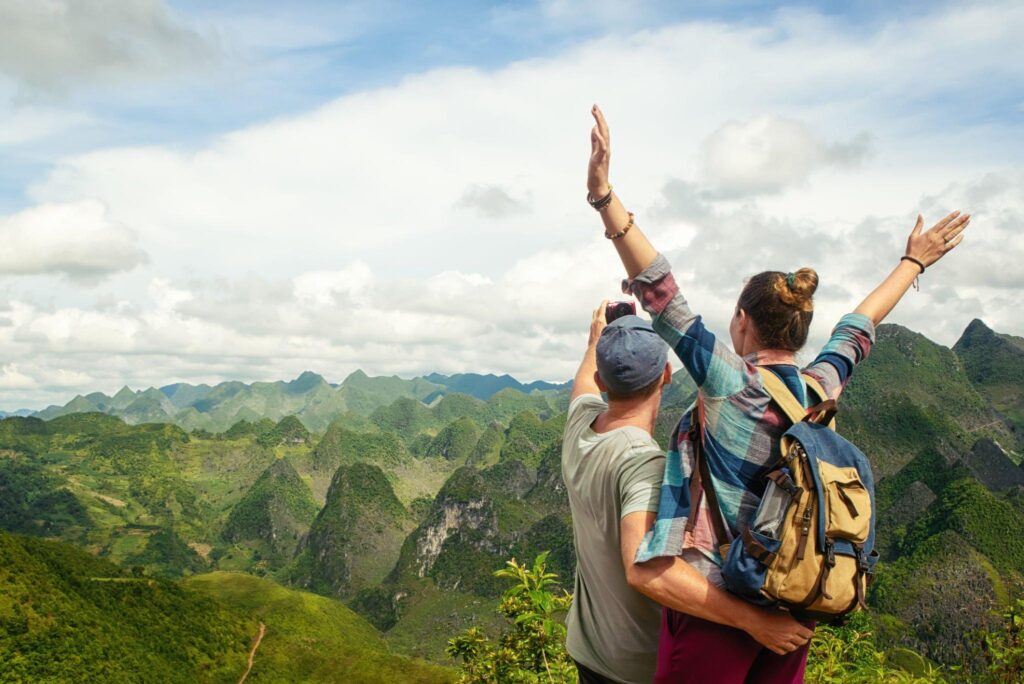
Remember to book accommodations in advance, especially during peak travel seasons. Research the location, read reviews, and compare prices to find the best option that suits your needs.
Keep in mind that the availability, quality, and pricing of accommodations can vary depending on the season and current circumstances. It’s always advisable to check for the latest information and make reservations in advance to secure your desired lodging.
Link to US Embassy for Emergency Contact in Vietnam Travel
Conclusion
Congratulations! You have gathered valuable information about Vietnam Travel and are now well-prepared to start planning your journey. Let’s recap the key takeaways from the landing page:
Vietnam’s Unique Highlights: Vietnam offers a dynamic blend of historical landmarks, breathtaking natural landscapes, vibrant cities, rich cultural heritage, and delicious cuisine.
Explore Diverse Regions: From the bustling streets of Ho Chi Minh City to the timeless beauty of Hoi An, the dramatic landscapes of Sapa, and the stunning coastline of Nha Trang, each region in Vietnam has its own charm and attractions.
Must-See Attractions: Don’t miss iconic sites like Ha Long Bay, the Cu Chi Tunnels, the Mekong Delta, the Imperial City of Hue, and the beautiful rice terraces of Mu Cang Chai.
Immerse in Local Culture: Engage with the warm and friendly locals, learn about Vietnam’s history, visit traditional markets, and experience traditional festivals for an authentic cultural experience.
Delicious Vietnamese Cuisine: Indulge in a variety of mouthwatering dishes like pho, banh mi, cao lau, and fresh spring rolls while exploring the vibrant street food scene or dining at local eateries.
Now, it’s time to turn your plans into reality! Start envisioning your Vietnam adventure and take the first step towards booking your travel experience.
Book Your Vietnam Experience
Safe travels and enjoy your time in Vietnam!



